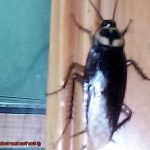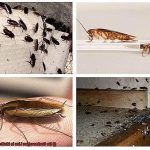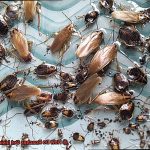Have you ever pondered the possibility of cockroaches lurking in your carpet? If the mere thought sends shivers down your spine, rest assured that you are not alone. Cockroaches are notorious for their resilience and adaptability, surviving in extreme conditions and finding food and shelter in unexpected places. But can they really live in carpet?
The answer is a resounding yes. Cockroaches can thrive in carpeted areas, especially homes where there is an abundance of food and moisture available. This can be alarming as these pests are known carriers of diseases and allergens.
To comprehend how cockroaches survive in carpet, we need to examine their behavior and survival instincts. These nocturnal insects are most active at night when we are asleep. During this time, they may crawl into tight spaces like carpet fibers to hide and lay eggs. They are also capable of surviving for extended periods without food or water, making carpet an ideal source of moisture.
In this blog post, we will delve deeper into how cockroaches can flourish in carpets, identifying signs that indicate a potential infestation, and outlining ways to prevent and eliminate them from your home. So let’s dive right into exploring these pesky pests’ surprising living habits within our carpets.
What Are Cockroaches?
Contents
Cockroaches are fascinating, albeit pesky, insects that have been around for millions of years. These resilient creatures belong to the insect order Blattodea and are characterized by their flat, oval-shaped bodies, long antennae, and six legs. Although there are over 4,000 species of cockroaches, only a few are considered household pests that infest human dwellings. These pests include the American cockroach, German cockroach, Oriental cockroach, and brown-banded cockroach.
Cockroaches are nocturnal insects that prefer dark and warm places, making them a common sight in kitchens, bathrooms, and basements. They are attracted to food sources and moisture and can feed on almost anything, including human food leftovers, paper, glue, and soap. One of the most impressive things about cockroaches is their ability to survive for weeks without food or water.
These resilient insects also reproduce quickly and can produce hundreds of offspring in a year. Female cockroaches lay egg cases called oothecae that can contain up to 50 eggs. The eggs hatch into nymphs that resemble adult cockroaches but lack wings.
Despite their reputation as household pests, cockroaches are known for their ability to survive in harsh conditions. They can live in various habitats such as garbage dumps, sewers, and drains. They can even withstand extreme temperatures and radiation exposure.
However, cockroaches pose a significant threat to human health as they can transmit diseases such as salmonella, E.coli, and typhoid fever. These pests leave behind droppings and shed skin that can trigger respiratory issues for people who suffer from allergies or breathing problems.
To prevent cockroach infestations in your home, it’s crucial to keep your living spaces clean and free of any food particles or spills that may attract these pests. Regular cleaning and treatment with insecticides can help prevent infestations and keep your home safe from these pesky insects.
Do Cockroaches Live in Carpets?
Cockroaches are notorious for their resilience and ability to survive in various environments, including carpets. These creepy crawlies are attracted to carpets because they provide a perfect hiding spot with shelter, warmth, and food sources. They can easily crawl into the fibers of the carpet and stay hidden during the day, making it challenging to detect their presence.
Carpets collect dirt, dust, and food crumbs that cockroaches can feed on, making them an ideal habitat. While cockroaches prefer areas with a high concentration of food sources, they may also move into carpets if there is a severe infestation or a lack of other hiding spots.
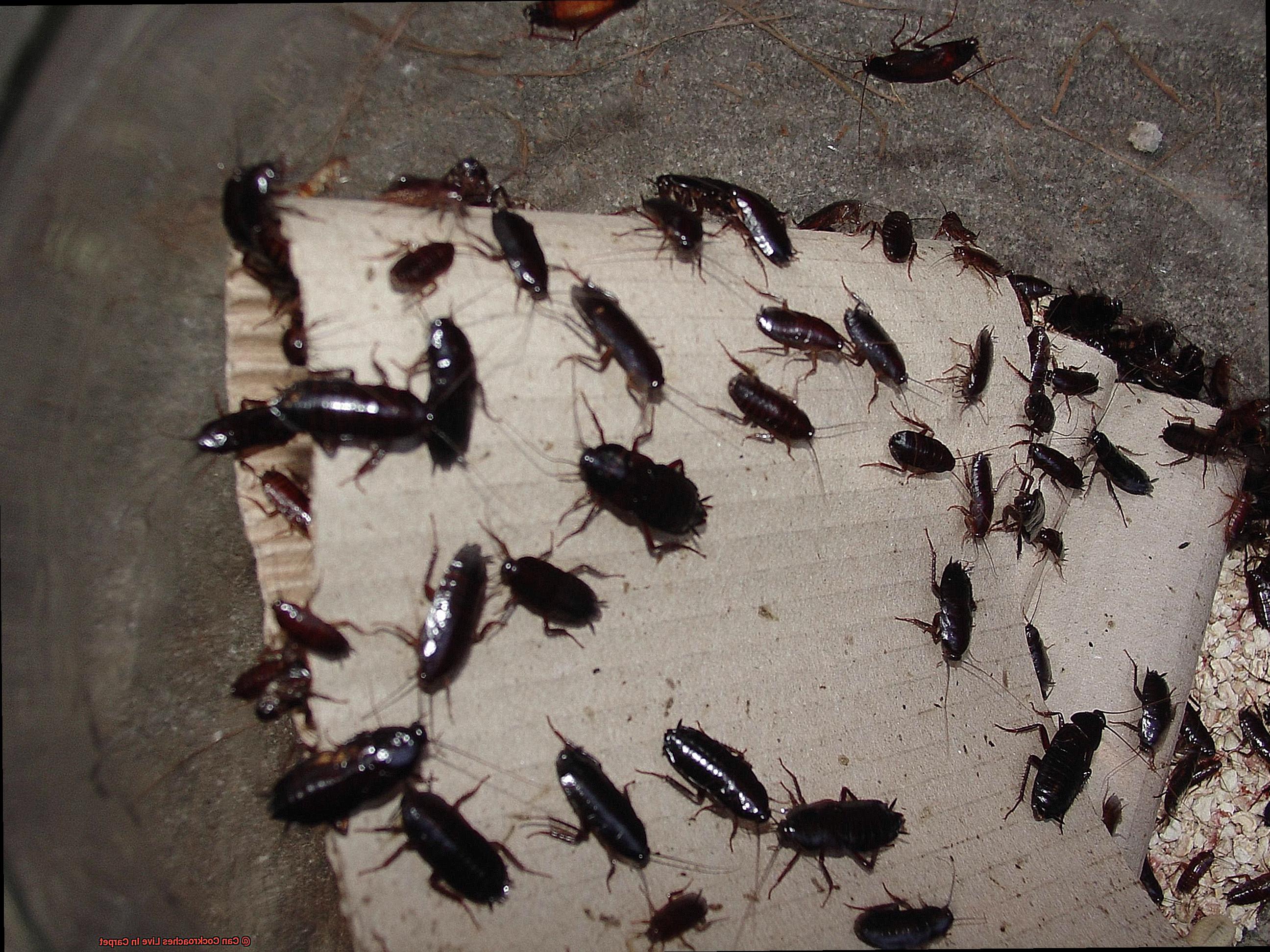
However, not all carpets are equally attractive to cockroaches. Carpets with natural fibers like wool or cotton offer more crevices and spaces for cockroaches to hide and lay their eggs, making them more susceptible to infestations than synthetic ones.
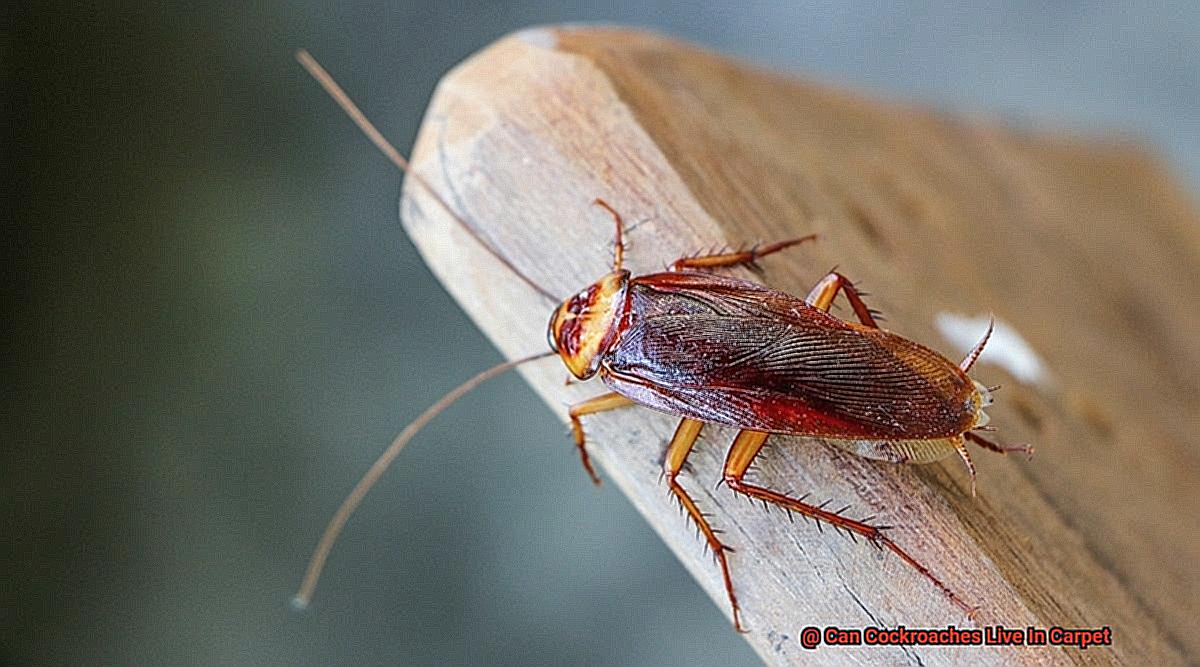
To prevent cockroaches from living in your carpets, maintaining cleanliness and hygiene in your home is crucial. Regular vacuuming and cleaning of carpets can help remove food crumbs and dirt that attract cockroaches. Additionally, sealing any cracks or crevices in walls or floors can prevent them from entering your home in the first place.
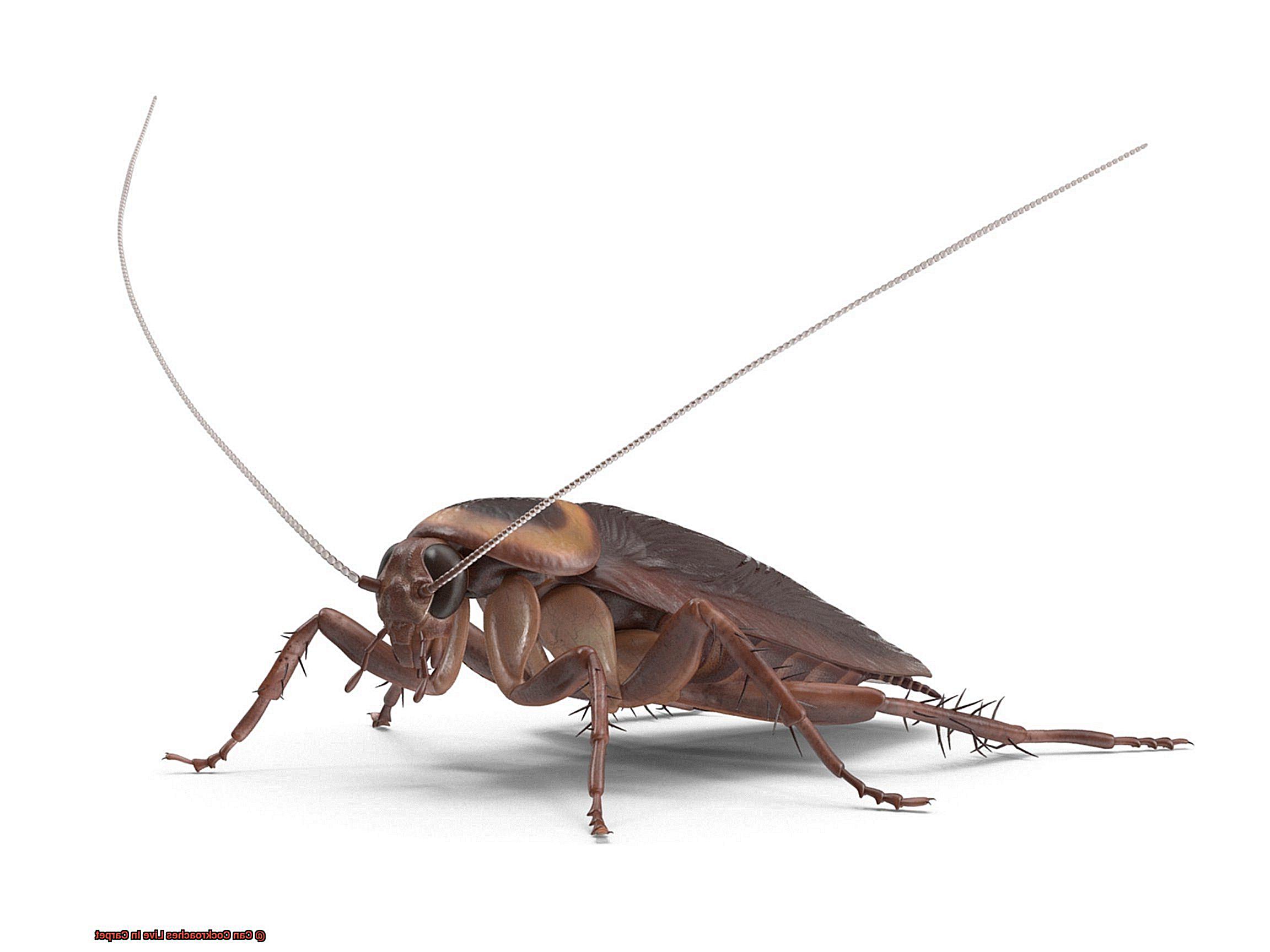
How Do Cockroaches Survive in Carpets?
Carpets are a popular choice for cozy home décor, but unfortunately, they can also be a haven for cockroaches. These creepy crawlies are masters of survival, capable of adapting to almost any environment, including your carpets.
Cockroaches are resilient creatures that can withstand tough conditions, and carpets provide the ideal environment for their survival. The warm and humid fibers of the carpet offer a perfect hiding place for these pests to thrive. They can easily sneak into the fibers of the carpet, where they can find food and water sources.
One of the primary ways cockroaches survive in carpets is by feeding on organic matter trapped within the fibers. From food crumbs to dead skin cells, hair, and even pet dander – nothing is off-limits. Carpets also provide a source of moisture for roaches, which is essential for their survival.
What’s more, cockroaches reproduce quickly, which further enhances their survival chances in carpets. Female roaches lay eggs in hidden crevices, and when the eggs hatch, the nymphs will feed on the carpet fibers until they reach adulthood. This cycle can continue indefinitely if roach infestations are not dealt with promptly.
Carpets also provide an ideal hiding place for cockroaches during the day when they are inactive. They can remain concealed in the fibers of the carpet until nightfall when they emerge to forage for food and water. This makes it difficult to detect roach infestations in carpets until significant damage has been done.
To prevent these pesky pests from taking over your cozy carpets, it’s essential to maintain clean carpets regularly. Addressing any moisture issues promptly is crucial as well. In cases of severe infestations or persistent problems, seeking professional pest control services is necessary.
What Attracts Cockroaches to Carpets?
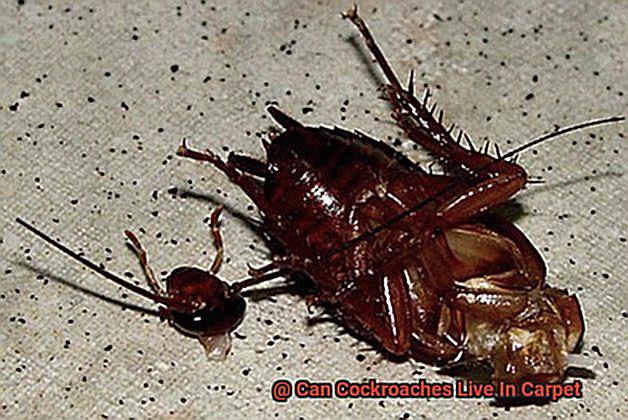
Well, the answer is simple: carpets provide the ultimate breeding ground for these resilient creatures.
Cockroaches thrive in warm and humid environments, and carpets can retain moisture and warmth, making them the perfect habitat. The fibers of carpets can also trap food particles, which can attract these pests looking for a source of nourishment.
But that’s not all. Cockroaches are attracted to the scent of other cockroaches. So if there is already an infestation in your home, the pheromones released by these pests can attract even more to the area. And if your carpet has been exposed to water or moisture, it may become damp, providing an ideal environment for these pesky critters.
Moreover, areas with high humidity or poor ventilation such as basements or bathrooms are prime targets for cockroach infestations. These places provide a dark and humid environment that can create a perfect habitat for them.
However, you don’t have to be at the mercy of these creepy crawlies. Regular vacuuming and deep cleaning can help remove food particles and reduce moisture levels in carpets. Additionally, fixing any water damage or leaks as soon as possible can prevent dampness from setting in.
Health Risks Associated with Cockroach Infestations in Carpets
While carpets can add warmth and comfort to our homes, they can also harbor unwanted guests: cockroaches. Unfortunately, these pesky insects are more than just a nuisance – they can pose significant health risks to individuals living in infested homes.
Cockroaches carry harmful bacteria and pathogens that can cause illnesses such as salmonella, E. coli, and dysentery. They leave behind droppings, saliva, and shed skins that can trigger allergic reactions in some people. For those with allergies or asthma, exposure to cockroach allergens can lead to respiratory problems and worsen symptoms like chronic sinus infections, skin rashes, and eye irritation.
But that’s not all. Cockroaches are also known to carry parasites like tapeworms and roundworms that can infect humans. These parasites can cause a range of symptoms such as nausea, vomiting, diarrhea, and even intestinal blockages.
Cockroaches are attracted to sources of moisture and food, including pet food, crumbs, and spills in carpets. Their presence in carpets can indicate poor sanitation practices and may attract other pests like rodents that can further exacerbate health risks.
It’s essential to take preventive measures such as proper sanitation practices and regular pest control treatments to minimize the risks associated with cockroach infestations in carpets. Remember – prevention is always better than cure.
How to Get Rid of a Cockroach Infestation in Your Carpet
Cockroaches are pesky creatures that can be a serious health hazard and difficult to eliminate once they infest your carpet. They can lay eggs in the fibers, making it nearly impossible to get rid of them without professional help. However, there are a few steps that you can take to try and eliminate these pests from your home. In this blog post, we will discuss five sub-topics to explain how to get rid of a cockroach infestation in your carpet.
Identifying the Source of the Infestation
Identifying the source of the infestation is crucial to eliminating cockroaches from your carpet effectively. Cockroaches are attracted to food, water, and warmth, so check for any leaks or spills in your kitchen or bathroom. Once you have identified the source, you can start taking steps to eliminate the infestation.
Using Bait Stations
Bait stations are an effective method for eliminating cockroaches from carpets. These contain a slow-acting poison that the cockroaches will eat and then carry back to their nest, killing off the entire colony. Bait stations are effective at eliminating both adult roaches and their offspring.
Using Insecticides
Insecticides can be sprayed directly onto the carpet or used as a fogger to cover a larger area. However, it is important to make sure that the insecticide is safe for use around pets and children. Follow the instructions carefully while using insecticides.
Using Diatomaceous Earth
Diatomaceous earth is a natural powder made from crushed fossils that can be used to eliminate cockroaches from carpets. Sprinkle it liberally over your carpet and vacuum it up after a few days. The powder will dehydrate the cockroaches and kill them off.
Maintaining Good Hygiene Practices
Maintaining good hygiene practices is critical to preventing future infestations. Vacuum your carpet regularly and steam clean it periodically to kill any remaining pests and their eggs. Store food in sealed containers and clean up any spills immediately to prevent attracting cockroaches.
Conclusion
In conclusion, cockroaches are tough pests that can survive in a variety of environments, including carpets. Carpets provide them with shelter, warmth, and food sources, making them an ideal habitat for these resilient creatures. Cockroaches can easily hide in the fibers of your carpet during the day, making it difficult to detect their presence.
However, having a cockroach infestation in your carpet poses significant health risks to you and your family. These pests carry harmful bacteria and pathogens that can cause serious illnesses such as salmonella, E. coli, and dysentery. They also leave behind droppings, saliva, and shed skins that can trigger allergic reactions in some people.
To prevent or eliminate a cockroach infestation in your home’s carpets, it is crucial to maintain cleanliness and hygiene regularly. Regular vacuuming and cleaning of carpets can help remove food crumbs and dirt that attract cockroaches. Additionally, sealing any cracks or crevices in walls or floors can prevent them from entering your home.
If you’ve taken preventive measures but still have problems with a cockroach infestation in your carpet, consider contacting a professional pest control service for help.




